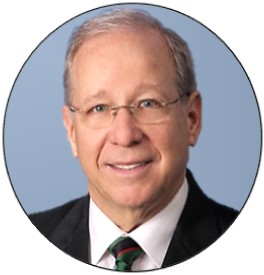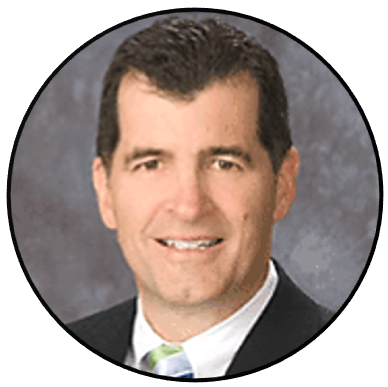What Can Advisors Do To Ensure Participants A Paycheck For Life®?
There are several steps advisors can take to help ensure that those thinking about retirement or the newly retired won’t run out of money during their “desirement” years – the time that they spend in retirement.
Before Retirement
As Social Security’s demise looms on the horizon, an increasing amount of Americans worry if their savings will be enough. The 401(k) plan has come to be one of the greatest vehicles for providing an adequate retirement. However, many workers (according to some estimates 40 percent) do not enroll in their companies’ 401(k) plans, and if they do, they probably are not saving enough. There are several steps you can take as an advisor to help participants to begin saving early and often, ensuring themselves Paychecks for Life®.
Step One: The 401(k) on Auto-Pilot
Many studies have shown that automatic features, including auto-enrollment, auto-placement, auto-escalation and auto-rebalancing, drastically improve participants chances of having successful retirements. Although participants cannot always control the automatic features in their plans, the sponsor can. You should talk with plan sponsors about restructuring plans to include automatic features, which offer them benefits, such as increased enrollment and fiduciary protection, as well.
Step Two: Other People’s Money
Participants are the masters of their own destinies, and you can teach them how to exploit other people’s money in their 401(k) plans. The first investors in their 401(k) Paycheck Manufacturing Company (besides the participants themselves) are their employers. If their company has a contribution matching program, make sure that participants use it. If they do not contribute at least the full matching percentage, they are missing out on free money. Some participants will only contribute two or three percent of their salaries to their 401(k)s, but if their employer is offering a five percent match, they should contribute at least that much to start.
The second investor in their Paycheck Manufacturing Company is Uncle Sam. Although most people consider him to be a “taker” more than a “giver,” Uncle Sam has provided 401(k) participants with a great opportunity. The contributions made to 401(k) plans are made with pre-tax dollars, and this allows participants’ assets to grow more quickly than if they had contributed in after-tax dollars. If your participants are in the 25 percent tax bracket, for every $100 they contribute, they are not taxed the $25 they would have been if they had not invested that money in their 401(k)s. They are already guaranteed a 33 percent return on their money, just by contributing to their 401(k)s.
Approaching Retirement
In addition to the steps made well before retirement, there are several other actions you can take when participants are thinking of retiring.
Step One: Assets vs. Liabilities
Dan is age 65. He put money into his 401(k) for over 40 years, and now he’s ready to enjoy the fruits of his labor. Dan has managed to put away a considerable sum of money, but will it be enough to cover his liabilities? Many advisors simply focus on the assets that participants were able to accumulate, but some are beginning to compare this amount to liabilities. If Dan has a large amount of debt (if he hasn’t paid off his mortgage or his credit cards, for example), his retirement plan assets might not be enough to provide him with a Paycheck for Life.
The first step in determining if participants are ready for retirement is to compare their assets with their liabilities. This will provide an initial snapshot of their financial future. If it’s unclear whether participants will have enough money to enjoy their retirement years, you can explore other options, such as working longer, increasing contributions to the maximum amount, etc. If you are uncertain about whether assets will be depleted prior to the actuarial age of death, it’s always better to err on the safe side and offer them several alternatives to ensure that they won’t run out of money, including buying an annuity, which is discussed in more detail below.
Step Two: Lifespan
Unfortunately, we can’t see the future. We don’t know if Dan will live to be 82 or 122, but either way, it is our job as advisors to make sure he will never have to struggle financially. It is difficult to calculate lifespan, but we can estimate spending needs slightly better if we do. Depending on spending habits, Dan needs to replace 70 to 90 percent of his annual income.
We can try to estimate Dan’s lifespan based on his parents, but there is still some risk involved since there are many factors that we may not know. Both of his parents may have smoked heavily from a young age, but Dan may never have touched cigarettes. Dan may be overweight whereas his parents exercised regularly. The list is endless. The best thing we can do is overestimate his needs rather than leaving him without money. There are on-line calculators available that estimate longevity based on health and a number of other factors.
Step Three: Annuities
Annuities are an increasingly popular investment choice since they provide guaranteed income, no matter what. Annuities protect retirees from a variety of risks, including outliving assets, but they also protect against investments declining in value and against inflation. Many participants do not consider lifetime income options because they are unfamiliar with this these kinds of investments. You should talk to participants and educate them about lifetime income options, including annuities.
Some plan provider may offer an annuity option within the 401(k). Although these options are typically called “lifetime income solutions,” they behave very similarly to annuities, which participants are often more familiar with. To use this option, participants must first purchase a “rider,” a contract for additional insurance, which can insure all of or only a portion of the participants’ assets. These types of annuities may not be for everyone since there are fees involved that reduce the portion of investable money within 401(k)s. Since not all providers offer annuities options within 401(k) plans, portability is another issue. “Traditional” annuities, outside of 401(k) plans, do not have these drawbacks and can be a great asset if longevity or inflation are major concerns for participants’ assets.
Retirees may not want to buy annuities as soon as they retire, but it is helpful to set aside a sum of money for future purchase. This keeps their options open if they are ever in need of alternative sources of income.
As advisors, we can take steps and make recommendations to participants or those nearing retirement. By helping participants to utilize the resources at their disposal, we can ensure that participants have a Paychecks for Life®.
This Website Is For Financial Professionals Only

















